The Supermicro X11SPA-T Review: An Impressive Cascade Lake Workstation Motherboard
by Gavin Bonshor on January 24, 2020 9:00 AM ESTVisual Inspection
The Supermicro X11SPA-T is an E-ATX motherboard designed for workstations and is compatible with Intel's Xeon Scalable and Xeon W-3200 series processors. Deviating slightly from the design of conventional prosumer models, the X11SPA-T has a black PCB, with black heatsinks, and black and blue memory slots. The large single LGA3647 socket and twelve memory slots dominate the majority of the top side, while the seven full-length PCIe 3.0 slots dominate the lower portion.
With its large E-ATX frame, there's a lot of key controllers which provides both servers, and workstation functionality for users. There are twelve memory slots which are separated into two banks, which are located on either side of the large LGA3647 socket. The twelve slots support up to DDR4-2933 ECC RDIMM and LRDIMM memory with capacities of up to 2 TB, and there's also support for Intel's DCPMM with processors that provide support.
In the bottom left-hand corner is seven full-length PCIe 3.0 slots which operate in two main configurations; x16/x0/x16/x0/x16/x0/x16 or x16/x8/x8/x8/x8/x8/x8. Each full-length slot is reinforced with metal armor.
For storage, the Supermicro X11SPA-T has four PCIe 3.0 x4 M.2 slots with each supplied with its own integrated heatsink. Each slot is vertically placed on the board with one located to the right of the full-length PCIe slots, two further over to the right of the chipset heatsink, and one located above these next to the memory slots. Each slot can accommodate M.2 2242/2260/2280, and 22110 drives. The X11SPA-T M.2 slots do support Intel VROC with RAID 0, and 1 support, but a VROC key is required. Also present are eight SATA ports with support for RAID 0, 1, 5, and 10 arrays.
A total of ten 4-pin headers are present with two dedicated for a CPU fan, and eight for chassis fans. The 4-pin headers are all located in the top half of the board with four to the left-hand side of the memory slots, three along the top, and three on the right-hand side below the 24-pin ATX motherboard power input. The power delivery is a simple 6-phase array, with a small, but ample black aluminium finned heatsink.
The Supermicro X11SPA-T is using one of the most popular BMC controllers via the ASPEED AST2500. The ASPEED 2500 provides graphics via its BMC functionality and offers GUI access from a D-sub video output located on the rear panel. Assisting the ASPEED 2500 is a Realtek RTL8211E Ethernet controller which is dedicated to the IPMI and offers users remote access to the X11SPA-T.
On the rear panel is three RJ45 networking ports, each driven by its own individual Ethernet controller. These consist of an Aquantia AQC107 10 G, an Intel I120-AT Gigabit, and a Realtek RTL8211E PHY for the IPMI. In terms of USB connectors. there are four USB 3.1 G1 Type-A, one USB 3.1 G2 Type-A, and one USB 3.1 G2 Type-C port. A Realtek ALC888 HD audio codec powers five 3.5 mm audio jacks and S/PDIF optical output, with a COM1, and VGA port which links up to the ASPEED 2500 BMC controller.
What's in The Box
Included in the accessories bundle are six SATA cables, an IO shield, a CPU to GPU power adapter, and a quick reference quick start guide. It should be noted that this is the retail package bundle, where the bulk list comes with just two SATA cables.


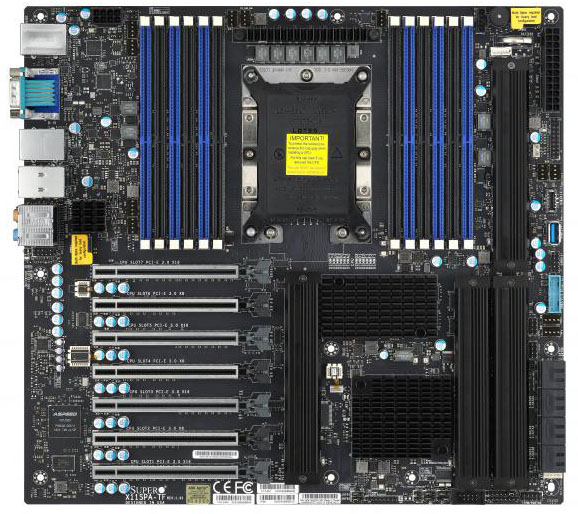
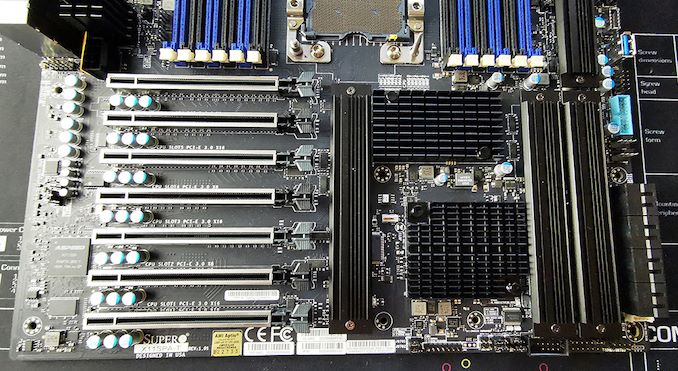
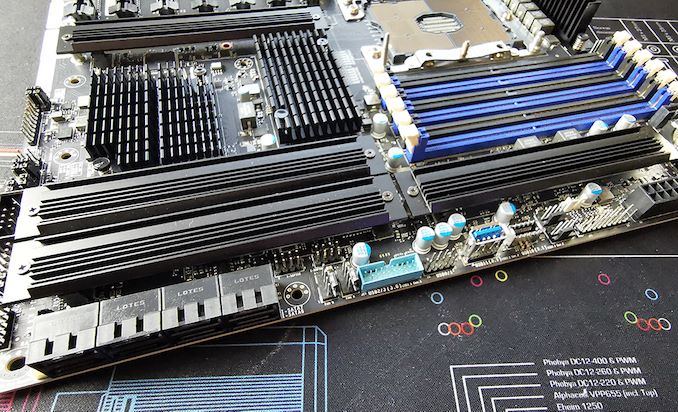

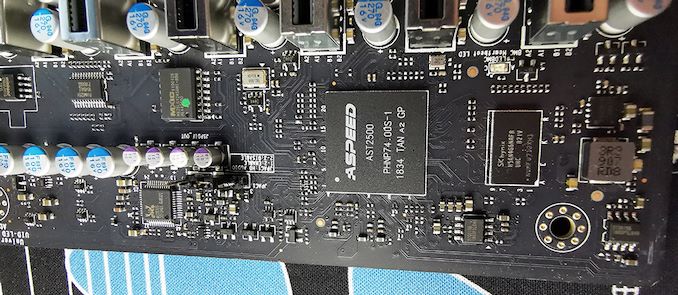
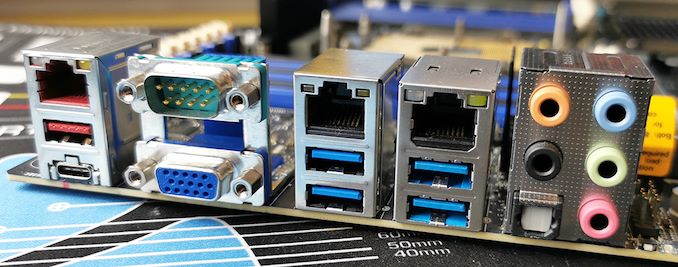
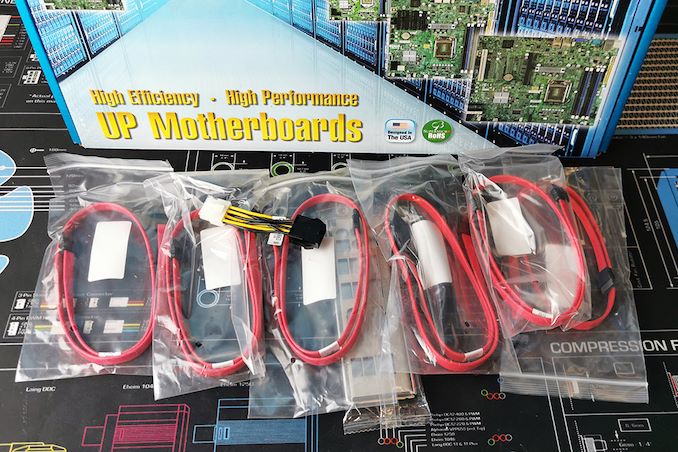








31 Comments
View All Comments
SSNSeawolf - Friday, January 24, 2020 - link
Gavin, can you comment as to why the W-3235 has a poor showing in some benchmarks, such as Ashes of the Singularity? It loses against it's older cousin, the 7900X, even though it has a slightly faster turbo, much more cache, more memory channels and the same mesh architecture.The only thing I can think of is that the 7900X is LCC Skylake silicon while the W-3235 is HCC, but it doesn't seem that such a big delta can be explained by an extra tile hop or two.
olafgarten - Friday, January 24, 2020 - link
As far as I know it's most likely because AOTS uses a lot of multiprocessing and so the HCC might make a difference therePCWarrior - Monday, January 27, 2020 - link
Three reasons for the difference:1. Looser memory timings (secondary, tertiary) on the workstation Supermicro boards compared to the enthusiast X299 ones with tighter timings. Also, likely looser primary timings (as well as looser secondary and tertiary) due to using 16GB DIMMs (and 6 of them) as opposed to 8GB DIMMS (and only 4 of them).
2. The cascade lake processors have built-in hardware mitigations that are known to have some performance impact. Sure this impact is smaller impact than equivalent software mitigations but larger impact than no security mitigations at all. The 7900X results show in the charts are likely from 2 years ago with no or fewer security mitigations applied.
3. Unlike enthusiast X299 boards that out-of-the box have no power limits and the cpu can turbo to its all-core turbo indefinitely, the Supermicro C246 boards adhere to Intel’s spec so the TDP is enforced after 28 (or so) seconds. So the 3235 in the above results was turboing to its all-core frequency (and we don’t know if it is 4GHZ as it is for the 7900X to begin with) for only 28 seconds - after that its frequency dropped to a value that would make the cpu power consumption not exceed 180W (i.e. equal to the TDP).
P.S: There is a mistake in the article. Specifically, under the Test Bed section it says that the board used was the X11SCA-W (instead of the X11SPA-T that this review is supposedly about). It also says that the RAM used was 2x16GB Corsair Vengeance LPX DDR4-2400 (run at 2666) which would have been the case for the X11SCA-W (mainstream 1151 socket and dual channel RAM). This board (the X11SPA-T) should have been tested with 6x16GB at 2933MHZ. Clearly the author forgot to fully update the table when he copy-pasted it from the older article about the X11SCA-W.
Tomatotech - Friday, January 24, 2020 - link
Nice to see how the big boys handle it. Most of my work is with mITX systems. Would be lovely to see a reasonably priced SFF mobo with more than 2 RAM slots and more than 1 nvme m.2 slot. There have been some but they’re not cheap.eastcoast_pete - Friday, January 24, 2020 - link
This board is outside my personal needs, but I would love to see a lower-priced good quality consumer ATX board with good VRMs, no LEDs and the appearance of this workstation board at a fair price. Something tells me I wouldn't be the only potential customer. Any takers?Foeketijn - Sunday, January 26, 2020 - link
I even emailed them to ask for a bullet proof no nonsense AM4 board (with official ECC support).otherwise - Tuesday, February 25, 2020 - link
The Asus "WS" boards are directly aimed at this market.watersb - Saturday, January 25, 2020 - link
Wow. Do I build one of these, or go for the Mac Pro?Licky McShmickletips - Saturday, January 25, 2020 - link
Please allow me to correct a small error in your postulation:"Do I build -two- of these, or buy one Mac Pro equivalent?"
Death666Angel - Saturday, January 25, 2020 - link
Do you need MacOS? Go with Apple. Do you just need a good workstation? Build it yourself. :)